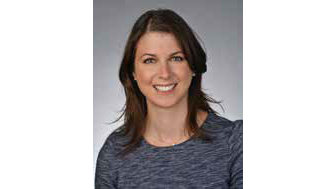There’s a statue in front of my hometown public library depicting one of the few women who fought in the Revolutionary War. As the original hero in the small colonial enclave of my upbringing, her likeness was dedicated to greet visitors to the historic space that houses some of my earliest, most comforting memories.
My lifelong love for history and books and knowledge most certainly dates back to that place. One of the oldest and most longstanding consolations in my life has always been wedged in a stack of books somewhere. It explains the solace I’ve always felt in any library or bookstore, and the hours of research I took great pleasure immersing myself in throughout my academic career. I find these familiar comforts have a phantom-esque way of seeping in and out of my most pivotal moments.
I was reminded of all this recently when I began working with a former colleague again. This person was someone I really never expected to interface with again, except maybe the casual run-in or unlikely social circle overlap. The individual just so happens to have been by my side, helping guide me through my very first InfoComm show. Naturally, this confluence of events on the eve of InfoComm 2016 has led me to look back and reflect on how far we’ve all come.
From the proliferation of telepresence and dedicated touchpanels to the transition into AV signals on a network and up in a cloud now, web conferencing, soft codecs, and the service-based business model—this industry continues to make astounding strides in short periods of time. It’s inspiring to say the least, but we wouldn’t be where we are today without the lessons and the people who influenced us from the very start.
Whatever those specific impetuses are, they may seem like distant memories, and they’ve surely been distorted by perceptions along the way, but they are intrinsic characteristics that help define us.
For me lately, it’s been those gentle, non-prodding prompts to avoid straying too far from completing important tasks, the confidence and familiarity, decisive judgment-calls, and immediately catching on to an embarrassing editing innuendo. These all seem benign, but it has helped me pinpoint the work processes that best serve my potential for success.
It’s safe to say that giant halls walled with audiovisual toys serve as many of your book stacks of solace. As you absorb the latest solutions in Vegas this month, I urge you to consider some of the context from yesteryear. While the most valuable influences of the past might seem like remote recollections, the familiarities stick with us and aren’t ever really lost forever.














